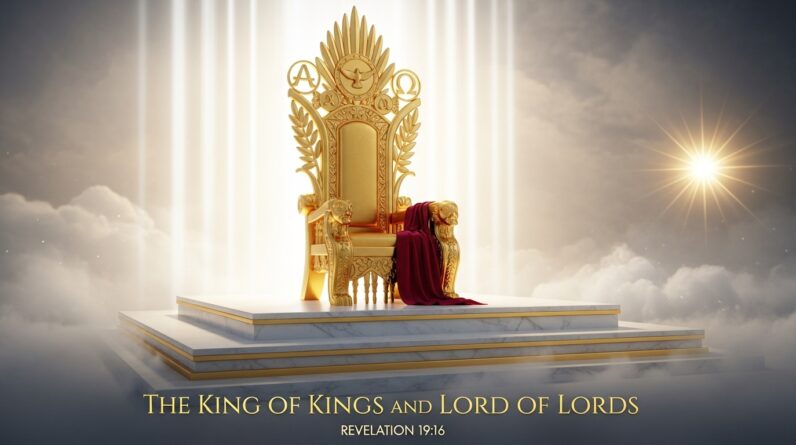Explore the pivotal chapter Genesis 3:1-24 in this study on the Fall of Man. Uncover profound theological themes, historical contexts, and practical lessons for today. 🌟
In this article, you’ll explore one of the most pivotal chapters in the Bible, Genesis 3:1-24. You’ll uncover the rich historical and literary contexts that shape the narrative of the Fall of Man, and you’ll see how this ancient text carries profound theological themes and practical lessons. Through engaging discussions and thoughtful reflections, you’ll gain a deeper understanding of God’s character, human nature, and the relevance of this story for today’s world. By the end, you’ll have meaningful insights that you can apply to your personal life and your community.
The Fall of Man – A Genesis 3:1-24 Study
Understanding “The Fall of Man” narrated in Genesis 3:1-24, is pivotal to grasping the broader implications of human history, theology, and personal faith. This study delves into the text, historical and literary contexts, theological themes, and relevant discussions, concluding with practical applications for today.
Bible Verse Text
To fully grasp the depth of this narrative, it is essential to read Genesis 3:1-24 in its entirety. Here is the passage for your reference:
Now the serpent was more crafty than any of the wild animals the Lord God had made. He said to the woman, “Did God really say, ‘You must not eat from any tree in the garden’?” The woman said to the serpent, “We may eat fruit from the trees in the garden, but God did say, ‘You must not eat fruit from the tree that is in the middle of the garden, and you must not touch it, or you will die.’” “You will not certainly die,” the serpent said to the woman. “For God knows that when you eat from it your eyes will be opened, and you will be like God, knowing good and evil.” When the woman saw that the fruit of the tree was good for food and pleasing to the eye, and also desirable for gaining wisdom, she took some and ate it. She also gave some to her husband, who was with her, and he ate it. Then the eyes of both of them were opened, and they realized they were naked; so they sewed fig leaves together and made coverings for themselves.
Then the man and his wife heard the sound of the Lord God as he was walking in the garden in the cool of the day, and they hid from the Lord God among the trees of the garden. But the Lord God called to the man, “Where are you?” He answered, “I heard you in the garden, and I was afraid because I was naked; so I hid.” And he said, “Who told you that you were naked? Have you eaten from the tree that I commanded you not to eat from?” The man said, “The woman you put here with me—she gave me some fruit from the tree, and I ate it.” Then the Lord God said to the woman, “What is this you have done?”
The woman said, “The serpent deceived me, and I ate.” So the Lord God said to the serpent, “Because you have done this,
“Cursed are you above all livestock and all wild animals! You will crawl on your belly and you will eat dust all the days of your life. And I will put enmity between you and the woman, and between your offspring and hers; he will crush your head, and you will strike his heel.”
To the woman he said,
“I will make your pains in childbearing very severe; with painful labor you will give birth to children. Your desire will be for your husband, and he will rule over you.”
To Adam he said, “Because you listened to your wife and ate fruit from the tree about which I commanded you, ‘You must not eat from it,’
“Cursed is the ground because of you; through painful toil you will eat food from it all the days of your life. It will produce thorns and thistles for you, and you will eat the plants of the field. By the sweat of your brow you will eat your food until you return to the ground, since from it you were taken; for dust you are and to dust you will return.”
Adam named his wife Eve, because she would become the mother of all the living. The Lord God made garments of skin for Adam and his wife and clothed them. And the Lord God said, “The man has now become like one of us, knowing good and evil. He must not be allowed to reach out his hand and take also from the tree of life and eat, and live forever.” So the Lord God banished him from the Garden of Eden to work the ground from which he had been taken. After he drove the man out, he placed on the east side of the Garden of Eden cherubim and a flaming sword flashing back and forth to guard the way to the tree of life.

Historical Context
Setting
Genesis 3 is set in the Garden of Eden, a paradise created by God for Adam and Eve to dwell in. This divine garden is depicted as a place of eternal provision, beauty, and intimate communion with God. The chapter marks a transition from a harmonious existence to one plagued by sin and labor.
Authorship and Date
Traditionally, Moses is regarded as the author of Genesis, likely composing it during the Israelite exodus from Egypt around 1446-1406 BC. However, some scholars argue for multiple sources over time. The exact authorship remains a point of debate but does not detract from the theological significance of the text.
Historical Background
Genesis is part of the Pentateuch, revered in Jewish and Christian traditions. It was written in a period where oral traditions were being transcribed, providing a foundation for understanding God, creation, and humanity’s role within it. The story of the fall precedes the history of Israel, marking it as a universal account relevant to all humankind.
Literary Context
Book Overview
Genesis is the first book of the Bible and covers the beginning of time, creation, the fall, the flood, and the patriarchs’ lives. This groundwork shapes the rest of the biblical narrative, framing themes of sin, redemption, and covenant that recur throughout Scripture.
Placement in Scripture
Genesis 3 stands at the opening of the Biblical canon, making it foundational for understanding the subsequent unfolding of God’s redeeming work. Positioned immediately after the creation narrative, it explains the contrast between God’s perfect creation and the pervasive nature of sin and death.
Theological Themes
Main Themes
One central theme in Genesis 3 is disobedience and its consequences. The narrative emphasizes human free will and the ramifications of deviating from God’s commandments. This theme echoes throughout scripture, underscoring the need for redemption.
God’s Character
Through Genesis 3, God’s justice and mercy are prominently displayed. While enforcing the consequences of sin, He also hints at future redemption (Genesis 3:15), showing His enduring love and commitment to restoring the broken relationship with humanity.
Human Response
Adam and Eve’s responses highlight themes of guilt, shame, and blame-shifting, reflecting untreated human nature. Their attempt to hide from God and their refusal to take responsibility set a pattern seen in human behavior throughout history.
Contemporary Relevance
The Fall resonates with contemporary issues of morality, responsibility, and the search for redemption. It offers insights into human nature—prompting readers to reflect on their lives, choices, and relationship with God.
Discussion
Q&A
- Why did the serpent target Eve? The serpent targeted Eve possibly because, as Adam’s companion, she was equally entitled to God’s instructions and blessings. Additionally, it showcases themes of deception and vulnerability.
- What is the significance of the forbidden fruit? The fruit symbolizes the knowledge of good and evil, encompassing trust, obedience, and the boundaries set by God to preserve harmony.
- Why were Adam and Eve expelled from Eden? Their expulsion represents the severance of the perfect relationship with God due to sin. It also signifies the commencement of a life marked by hardship and mortality.
- What is the protoevangelium mentioned in Genesis 3:15? Protoevangelium refers to the first hint of the gospel, where God speaks of enmity between the serpent and the seed of the woman, indicating future victory over evil.
Moral and Practical Applications
Personal Reflection
Reflecting on the fall can lead to personal introspection about one’s choices and obedience to God’s will. It calls for recognizing human limitations and the need for divine grace.
Community Application
In a community setting, discussions around Genesis 3 can foster a deeper collective understanding of sin’s impact. It can lead to supportive environments focused on accountability, forgiveness, and growth.
Action Plan
- Study Genesis 3 in a small group.
- Reflect and journal on personal experiences of obedience and temptation.
- Discuss God’s character as revealed in the passage, focusing on justice and mercy.
- Plan community outreach that reflects understanding and compassion inspired by the study.
Conclusion
“The Fall of Man” in Genesis 3:1-24 offers crucial insights into sin’s beginnings, humanity’s nature, and God’s unwavering plan for redemption. As you study and reflect on this passage, it is pivotal to recognize its enduring relevance and apply its lessons to both individual and community life.







